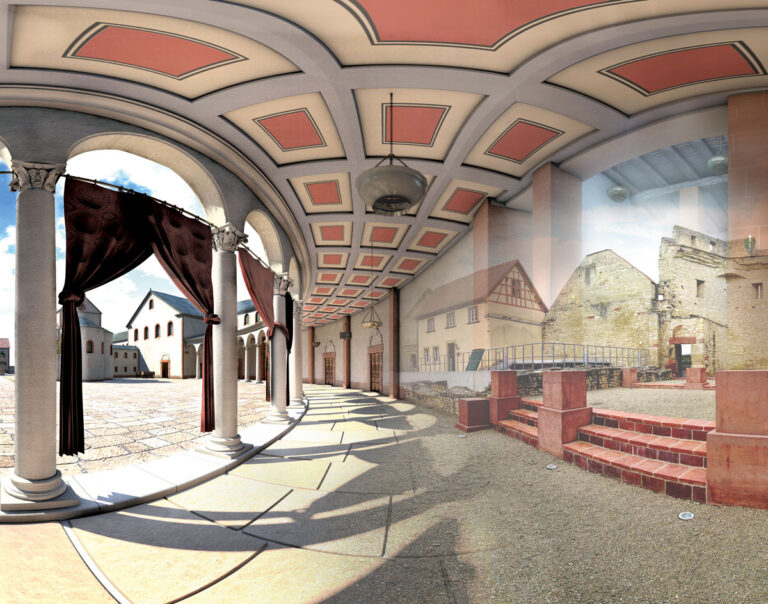Project development
The Project Development and Public Relations unit is responsible for the conception, organisation and implementation of new, innovative projects. The main aim is to present the results of the archaeological excavations from over 100 years and the historical, art-historical and architectural knowledge about the Imperial Palace in an exciting and appealing way for a broad public. Didactic concepts are newly developed and implemented, research and investigation results are published and contextualised for various target groups in different ways (internet, social media, cabinet exhibitions, virtual and physical presentations). This includes exhibitions and presentations, which have a fundamentally important function for the publication of specialised knowledge. They are a key to public participation in research and an interface between specialist audiences and monument visitors from all over Germany. In addition, they have a decisive influence on how the research centre is perceived by the scientific community and especially by the non-scientific public.

Rekonstruktion des Säulengangs am Heidesheimer Tor für die Präsentation Säulen der Macht im Jahr 2020. Bild: Roman Shuf (Foto), Archimedix GmbH (Rekonstruktion), Ina Meillan (Montage).
The Kaiserpfalz Research Centre has been active in the field of digital reconstructions for over 20 years, making it one of the pioneers. The research centre was invited to the international trade fair for museums EXPONATEC in 2021 to report on its digital offerings. Its good reputation also leads to regular invitations to participate in archaeological-historical projects of other institutions at state and national level (Sharing heritage, Bewegte Zeiten).

Anlässlich des Europäischen Kulturerbejahres Sharing Heritage präsentierte die Forschungsstelle 2018 eine Rekonstruktion des mit buntem Marmor gestalteten Fußbodens der Pfalzanlage. Bild: Stadt Ingelheim, Michael Bellaire.
Another example from the project development unit is the design of hologram showcases, which use the latest technology to achieve a particularly impressive visual impact. Other institutions are now also drawing on the research centre’s experience in this area. In 2020, for example, a presentation with a hologram showcase was realised at Trifels Castle, a property of the Department of Castles, Palaces and Antiquities of the Rhineland-Palatinate Directorate-General for Cultural Heritage (GDKE/BSA).
In order to make exhibitions permanently available, the research centre has already been working with virtual 360° tours for several years. This makes it possible to create location-independent presentations that can be accessed online long after an exhibition has closed. One example of this is the exhibition The Charismatic Place, which was on show in Ingelheim in 2019.
Project development also includes the research centre’s press and public relations work. This is a requirement for awareness and transparency. The research centre has also had a Facebook presence for a good two years, with around 1,000 followers including many private individuals interested in archaeology and history as well as other institutions such as the Rhineland-Palatinate Directorate-General for Cultural Heritage (GDKE), restorers, publishers and tourism associations.